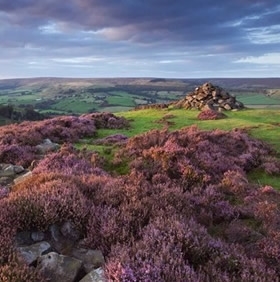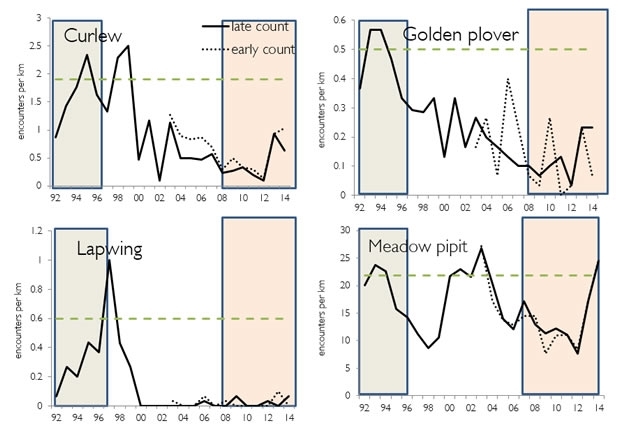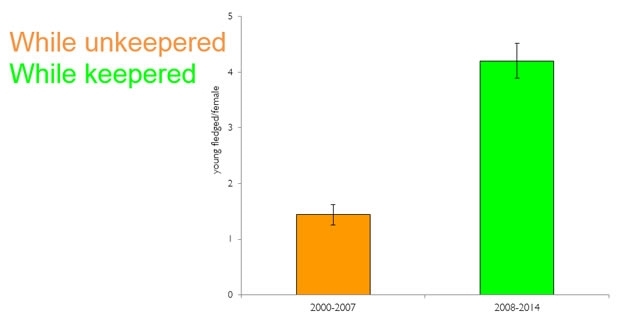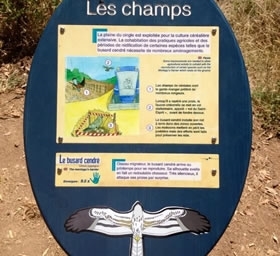 By Andrew Gilruth, GWCT Communications Director
By Andrew Gilruth, GWCT Communications Director
The organisers had done a brilliant job in bringing a diverse range of speakers together, but it was frustrating that so few people came to hear them. I estimated there were some 50 delegates there on Friday (less organisers and speakers). For those that are interested in these things I offer some personal reflections on the first day of the conference.
Raptor conflict is not black and white
Angela Smith MP (Penistone and Stocksbridge – Labour) pointed out that the “deeply embedded conflict” is “not a black and white issue”. She illustrated this by pointing out those calling for a ban on driven grouse shooting should recognise it may not necessarily lead to the end of the illegal killing of birds of prey. Angela reiterated that the best way forward was to balance raptors and moorland management.
Urban society – disconnected from our countryside
Professor Ian Rotherham (Sheffield Hallam University) explained his view that we are an urban society that has “disconnected” from our countryside. We now just view the countryside as a place for recreation, and this “cultural severance” has real risks. This disconnect has already happened in other countries. In North America, Australia and South Africa, the suppression of traditional vegetation-burning techniques has had catastrophic consequences.
Driven grouse shooting – the benefits
Pat Thompson (RSPB) highlighted his five points:
- Protection of heath and bog from forestry
- Significant investment in management and restoration of upland heath
- Legal control of predators benefits some birds
- Tick control
- Local economy
Wader birds
Dr Adam Smith (GWCT) also reminded the conference of the loss of curlew, golden plover and lapwing on Langholm Moor when the gamekeepers left, and this is a key driver behind the GWCT’s commitment to the Defra hen harrier recovery plan.

Langholm Moor
The data from Langholm was cited by several speakers. Adam Smith pointed out that there was a period in the 90s where hen harriers and driven grouse shooting did co-exist.

So is driven grouse shooting “underpinned” by wildlife crime?
Professor Stephen Redpath (University of Aberdeen) was asked by Mark Avery if his former work at Langholm showed “that driven grouse shooting is underpinned by wildlife crime – Yes/No?”. The response was a simple “No”. Stephen was one of the scientists involved in the original Joint Raptor Study (JRS) at Langholm (sometimes referred to as Langholm One) and went on to explain the variation between moors, including voles and meadow pipit numbers.
Conflict resolution – strong leadership and time
Pat Thompson (RSPB) explained why the RSPB had withdrawn its support for Defra’s hen harrier action plan after six months because they had “run out of patience”, but as Professor Stephen Redpath (University of Aberdeen) explained, effective conflict resolution “needs strong leaders“ and “needs time”. Adrian Jowitt (Principal Advisor, Natural England) explained that the plan stemmed from six years of talks and “accommodated the view of all involved”. Mark Avery said that he was “not interested in compromise”.
Brood Management Scheme

Philip Merricks (Chairman, Hawk & Owl Trust) explained their involvement and Adam Smith explained that “in France and in the Iberian Peninsula, an average 60% of nestlings are saved by this kind of measure”.
Adrian Jowitt explained that they would be running a trial, and Stephen Redpath likes brood management because we can monitor and test it.
Lowland reintroduction
Stephen Murphy (Hen Harrier Project Officer, Natural England) explained that since 2002 there have been three recorded nests (producing seven chicks) in Cornwall, Gloucestershire and Wiltshire, which he feels are probably French harriers.
Adrian Jowitt explained that any lowland reintroduction would be sourced from Europe, which left me wondering why the RSPB had decided not to get involved in the lowland harrier reintroduction. Mike Clarke (CEO, RSPB) said only last month that “we [RSPB] want them [hen harriers] back here [RSPB Rainham Marshes]” – reintroduction could do that quickly.
Dr Adam Smith's Presentation
Below are the slides from the presentation Dr Adam Smith delivered at the conference: